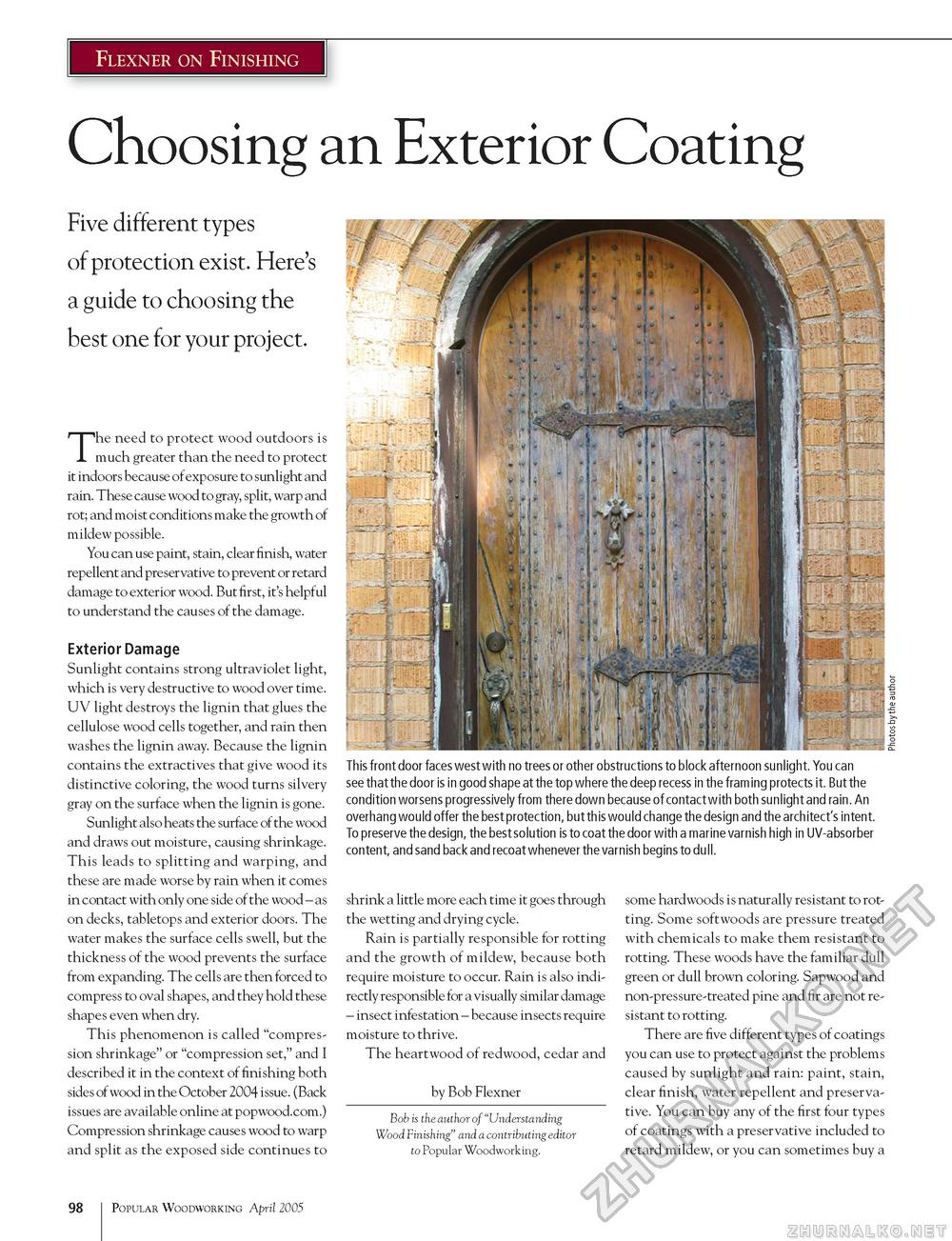Popular Woodworking 2005-04 № 147, страница 102
Flexner on Finishing Choosing an Exterior Coating Five different types of protection exist. Here's a guide to choosing the best one for your project. The need to protect wood outdoors is much greater than the need to protect it indoors because of exposure to sunlight and rain. These cause wood to gray, split, warp and rot; and moist conditions make the growth of mildew possible. You can use paint, stain, clear finish, water repellent and preservative to prevent or retard damage to exterior wood. But first, it's helpful to understand the causes of the damage. Exterior Damage Sunlight contains strong ultraviolet light, which is very destructive to wood over time. UV light destroys the lignin that glues the cellulose wood cells together, and rain then washes the lignin away. Because the lignin contains the extractives that give wood its distinctive coloring, the wood turns silvery gray on the surface when the lignin is gone. Sunlight also heats the surface of the wood and draws out moisture, causing shrinkage. This leads to splitting and warping, and these are made worse by rain when it comes in contact with only one side of the wood - as on decks, tabletops and exterior doors. The water makes the surface cells swell, but the thickness of the wood prevents the surface from expanding. The cells are then forced to compress to oval shapes, and they hold these shapes even when dry. This phenomenon is called "compression shrinkage" or "compression set," and I described it in the context of finishing both sides of wood in the October 2004 issue. (Back issues are available online at popwood.com.) Compression shrinkage causes wood to warp and split as the exposed side continues to This front door faces west with no trees or other obstructions to block afternoon sunlight. You can see that the door is in good shape at the top where the deep recess in the framing protects it. But the condition worsens progressively from there down because of contact with both sunlight and rain. An overhang would offer the best protection, but this would change the design and the architect's intent. To preserve the design, the best solution is to coat the door with a marine varnish high in UV-absorber content, and sand back and recoat whenever the varnish begins to dull. shrink a little more each time it goes through the wetting and drying cycle. Rain is partially responsible for rotting and the growth of mildew, because both require moisture to occur. Rain is also indirectly responsible for a visually similar damage - insect infestation - because insects require moisture to thrive. The heartwood of redwood, cedar and by Bob Flexner Bob is the author of "Understanding Wood Finishing" and a contributing editor to Popular Woodworking. some hardwoods is naturally resistant to rotting. Some softwoods are pressure treated with chemicals to make them resistant to rotting. These woods have the familiar dull green or dull brown coloring. Sapwood and non-pressure-treated pine and fir are not resistant to rotting. There are five different types of coatings you can use to protect against the problems caused by sunlight and rain: paint, stain, clear finish, water repellent and preservative. You can buy any of the first four types of coatings with a preservative included to retard mildew, or you can sometimes buy a 98 Popular Woodworking April 2005 |








